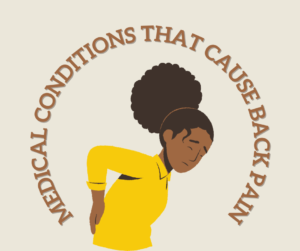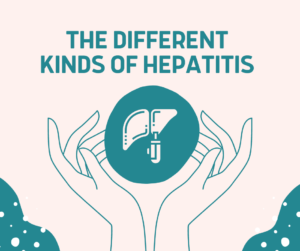We have probably heard of the “ ice bucket challenge” that took over social media a few years ago that was initiated to raise awareness for ALS. The challenge raised a whopping $115 million in donations, a generous sum towards a worthy cause. The helpful providers of hospice care in Burbank Ca tells us that ALS affects the neurons and goes on to the body’s muscles. When health professionals at the hospice have a good grasp of what ALS is and how it passes through the different stages, it helps patients with ALS and their loved ones prepare. By all means, every patient has a unique experience with ALS, and some cases advance more swiftly than others.
If patients needing hospice care in Los Angeles or Burbank have troubling symptoms that indicate an early stage of ALS, then providers of hospice care recommend an immediate evaluation and diagnosis. It is common for the early stages of ALS not to show any worrying symptoms, and receiving a diagnosis gives everyone time to prepare.
Unfortunately, there is no cure for ALS, so treatment is usually prescribed to manage symptoms, handle emotional issues brought on by ALS and make sure the patient has support and the help they require when muscle weakness and paralysis begin to happen. The providers of hospice care Burbank Ca will explain what ALS is, how quickly it progresses, and how hospice care is a vital part of managing symptoms in the late stages.
What Is ALS, And How To Recognize The Symptoms?
ALS stands for amyotrophic lateral sclerosis, a disease that affects the neurons. The disease initially invades the muscles, resulting in the inability to work generally in the mid and late stages. The condition is progressive, so symptoms will only worsen over time. Sadly, there is no cure for ALS, and the goal of treatment is to manage the physical symptoms and emotional distress of the patient.
Those who experience early symptoms of ALS should go to a doctor to find out if ALS is the determinant of the symptoms. Getting an early diagnosis lets the patients properly prepare for a long-term care plan to manage symptoms and maintain the best possible quality of life. Patients can guarantee that they attain an early diagnosis by understanding the signs of the early stages of ALS and quickly taking action if numerous symptoms develop and become chronic.
How Is ALS Diagnosed?
ALS appears differently for every patient in the early stages. When a doctor diagnoses a patient, they are usually looking out for the following early symptoms of ALS:
- Involuntary muscle twitches
- Muscle cramps and weakness
- Poor balance and problems walking
- Chronic headaches
- Chronic fatigue and lack of motivation
- Slurred speech
If these problematic symptoms exist, the doctor may move forward with various tests to establish a potential ALS diagnosis. Several routine tests that doctors usually perform include nerve conduction velocity (NCV), spinal tap and urine test, electromyography (EMG), muscle biopsy, nerve biopsy, magnetic resonance imaging (MRI), and X-rays. Also, a neurological evaluation may be ordered depending on the symptoms.
Progression And Stages Of ALS
ALS goes through three main stages: the early stage, middle stage, and late stage. How quickly ALS progresses is different for everyone, even though there is no cure for the disease, and the objective for treatment is to manage the symptoms of each stage. The most prevalent symptoms of the various stages of ALS include:
Early Stages
As mentioned before, the early symptoms of ALS include involuntary twitches, poor balance, muscle cramps and weakness, chronic fatigue, and slurred speech. Not all instances include or are restricted to these symptoms.
Middle Stage
The generic symptoms of the intermediate stage of ALS include some breathing complications, muscle paralysis, issues standing, and more comprehensive muscle cramps.
Late (End) Stage
The signs in the final stages of ALS typically include severe muscle paralysis, breathing complications, the inability to speak or eat, chronic headaches, and severe fatigue.
Most of the time, patients who have ALS die because of respiratory complications. The pain resulting from ALS can usually be managed and kept to a minimal level through medication, therapy, and other interventions provided in palliative and hospice care.
How To Manage Symptoms With Hospice Care
Hospice care is geared towards ALS patients in the end stages. Its purpose is to help ALS patients maintain the best possible quality of life and remain comfortable in the end stages. Hospice care is usually needed, as the patient will probably not be able to support themselves properly, and hospice care workers provide sufficient care when away from close family members.
In the late stages, the physical symptoms of ALS are extreme. Besides the discomfort, the patient will probably not be able to move around on their own, eat, speak or breathe without difficulty. Hospice care can also help family members who are dealing with emotional problems as they help their loved ones in the end stages of ALS.
Hospice care is suitable for an ALS patient diagnosed with six months or less to live if the disease goes on with its usual progression. For patients or families thinking about the support of hospice, there are a few key things to look for when deciding whether the patient may be eligible:
- Structural/functional impairments
- Debilitated nervous system structures
- Undermined communication and mental function
- Diminished sensory functions and pain
- Impaired mobility, neuromusculoskeletal, and movement functions
- Outbreak of secondary conditions contributing to a terminal prognosis
- Lack of self-care
- Activity limitations
When an ALS patient is admitted to hospice, the care team will start making visits to provide relief from pain, companionship, personal care, and emotional and spiritual support.
Hospice in Burbank or Los Angeles can also help families cope with financial burdens by providing medication and medical devices such as wheelchairs, beds, and other personal care items.







